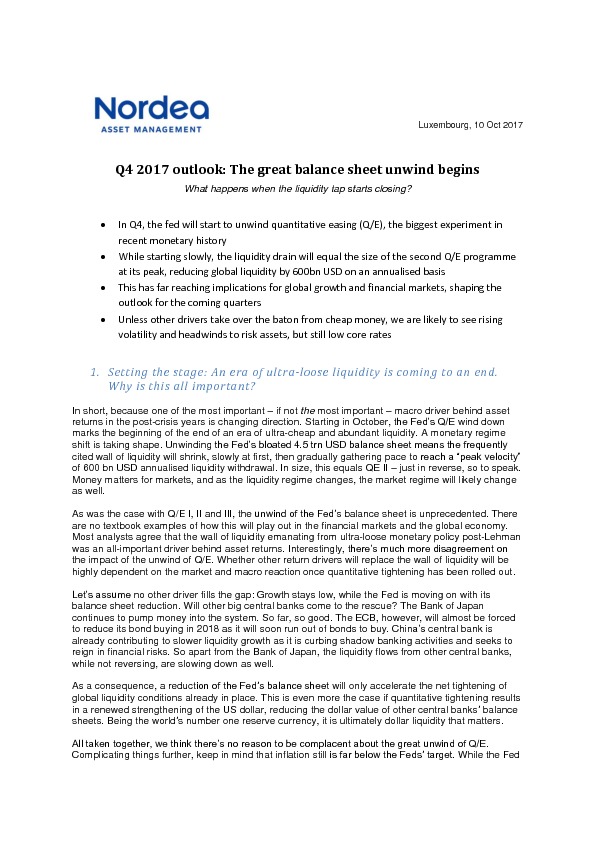Q4 2017 outlook: The great balance sheet unwind begins

In short, because one of most important – if not most important – macro driver behind asset returns in the post-crisis years is changing direction. Starting in October, the Fed’s Q/E wind down marks the beginning of the end of an era of ultra-cheap and abundant liquidity. A monetary regime shift is taking shape. Unwinding the Fed’s bloated 4.5 trn USD balance sheet means the frequently cited wall of liquidity will shrink, slowly at first, then gradually gathering pace to reach a “peak velocity” of 600 bn USD annualised liquidity withdrawal. In size, this equals QE II – just in reverse, so to speak. Money matters for markets, and as the liquidity regime changes, the market regime will likely change as well.
was the case with Q/E I, II and III, the unwind of the Fed’s balance sheet is unprecedented. There are no textbook examples of how this will play out in the financial markets and the global economy. Most analysts agree that the wall of liquidity emanating from ultra-loose monetary policy post-Lehman was an all-important driver behind asset returns. Interestingly, there’s much more disagreement on the impact of the unwind of Q/E. Whether other return drivers will replace the wall of liquidity will be highly dependent on the market and macro reaction once quantitative tightening has been rolled out.
Registreer of log in om verder te lezen. Investment Officer is een onafhankelijk journalistiek platform voor professionals werkzaam in de Belgische beleggingsindustrie.
Een abonnement is GRATIS voor professionals die werkzaam zijn bij banken en onafhankelijke vermogensbeheerders.



